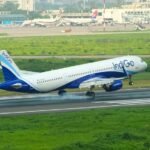The USS Nimitz, one of the most iconic aircraft carriers in the U.S. Navy, recently experienced two accidents in the South China Sea. On a single Sunday, an MH-60R Sea Hawk helicopter and an F/A-18F Super Hornet fighter jet crashed within 30 minutes of each other.
- USS Nimitz Deployment and Operational Role
- MH-60R Sea Hawk Helicopter Incident
- F/A-18F Super Hornet Fighter Jet Incident
- Rescue Operations and Crew Safety on USS Nimitz
- Historical Aircraft Mishaps on USS Nimitz and Other Carriers
- USS Nimitz in the South China Sea and Regional Security
- Aircraft and Squadron Operations on USS Nimitz
- USS Nimitz Legacy, Model, and Decommissioning
- USS Nimitz in the News and Global Attention
- Strategic Importance and China Power Gap
- Conclusion: USS Nimitz Demonstrates Naval Excellence
- FAQs
All five crew members aboard both aircraft were rescued and are in stable condition. The Pacific Fleet confirmed that investigations are ongoing. Preliminary reports suggest possible causes, including mechanical issues or faulty fuel.
While accidents like these are rare, they highlight the risks inherent in carrier-based aviation and operations in contested waters where the Chinese Navy is active. The incidents also underscore the importance of safety, training, and rapid search-and-rescue operations aboard USS Nimitz.
USS Nimitz Deployment and Operational Role
Global Operations and Strategic Missions
The USS Nimitz (CVN 68) has served in the Middle East, the Western Pacific, and the South China Sea. Its deployments support both military and humanitarian missions. The carrier often operates near strategic locations like Guam and the Philippine Sea, ensuring safe passage for commercial shipping.
These missions help maintain freedom of navigation and demonstrate U.S. naval power. The carrier’s presence reassures allies and deters aggressive maneuvers from regional actors.
Carrier Strike Group Coordination
During deployments, USS Nimitz functions as the centerpiece of Carrier Strike Group 11, coordinating multiple squadrons and support vessels. This integration allows rapid response to emerging threats and ensures operational readiness even in high-risk areas.
The strike group provides surveillance, logistical support, and emergency response capabilities, enhancing the carrier’s effectiveness in both routine operations and crises. Read another article on Trump tax bill
MH-60R Sea Hawk Helicopter Incident
Details of the Crash
The first accident involved an MH-60R Sea Hawk, operated by Helicopter Maritime Strike Squadron 73, known as the “Battle Cats.” The helicopter crashed around 2:45 p.m. local time during routine flight operations from USS Nimitz.
Crew Rescue and Safety Protocols
Rescue teams were immediately deployed from USS Nimitz, recovering all three crew members. This highlights the carrier’s robust emergency response capabilities.
The Sea Hawk is a vital aircraft for anti-submarine warfare and reconnaissance. Its rapid recovery preserved operational readiness and minimized risk to personnel.
F/A-18F Super Hornet Fighter Jet Incident
Details of the Fighter Jet Crash
Approximately 30 minutes after the Sea Hawk incident, an F/A-18F Super Hornet assigned to Strike Fighter Squadron 22, the “Fighting Redcocks,” crashed during flight operations. Both pilots successfully ejected and were rescued by teams aboard USS Nimitz.
Operational Significance of the Super Hornet
The F/A-18F is a multi-role fighter capable of air-to-air combat, ground attacks, and reconnaissance missions. It is a critical asset for maintaining USS Nimitz’s operational readiness.
The incident underscores the challenges of carrier aviation, where pilots must operate in confined spaces and respond quickly to emergencies.
Rescue Operations and Crew Safety on USS Nimitz
Emergency Response Procedures
The successful recovery of all five personnel demonstrates the effectiveness of USS Nimitz’s search-and-rescue protocols. Carrier-based aviation carries unique risks, including limited landing space, moving decks, and variable weather.
Crews are extensively trained in emergency procedures, fire containment, and evacuation drills. This preparation ensures a rapid, coordinated response to accidents, minimizing casualties. Read another article on Visit our homepage for more information
Training of Squadrons
The “Battle Cats” and “Fighting Redcocks” undergo continuous training in flight safety and operational coordination. Their proficiency allowed for swift recovery of the crew and prevented further incidents.
Training also emphasizes ejection procedures, deck coordination, and communication with support vessels—critical factors in maintaining carrier readiness.
Historical Aircraft Mishaps on USS Nimitz and Other Carriers
Past Incidents
Although rare, accidents on carriers have occurred previously. USS Harry S. Truman and USS Gettysburg have experienced aircraft mishaps, including jets slipping off decks or being misfired during exercises.
No fatalities resulted from these incidents, reflecting the Navy’s commitment to safety. Lessons learned from past mishaps inform protocols on USS Nimitz, reducing risk during active operations.
Maintenance and Operational Checks
Investigators examine aircraft maintenance logs, fuel quality, and environmental conditions to determine causes of crashes. These reviews help improve safety standards and operational procedures across the fleet.
USS Nimitz in the South China Sea and Regional Security
Geopolitical Context
The South China Sea is a highly strategic waterway with contested territorial claims. USS Nimitz operations maintain freedom of navigation and ensure regional maritime security.
Its presence addresses the China power gap and supports allied nations concerned about maritime stability. By projecting power, the carrier reassures partners and deters potential aggression.
Interactions with the Chinese Navy
Close encounters between U.S. and Chinese military aircraft have increased in recent years. USS Nimitz plays a key role in these interactions, signaling U.S. commitment to protecting international waters.
Carrier-based aviation, including MH-60R Sea Hawks and F/A-18F Super Hornets, provides a flexible response to both regional threats and routine security operations.
Aircraft and Squadron Operations on USS Nimitz
Roles of the MH-60R and F/A-18F
The Sea Hawk helicopter provides anti-submarine and reconnaissance capabilities, while the Super Hornet fighter jet enables strike readiness and air superiority. Both aircraft are integral to USS Nimitz’s mission success.
Integration with Flight Deck Operations
Flight deck crews coordinate closely with pilots to execute landings, takeoffs, and emergency protocols. This coordination ensures operational continuity, even during simultaneous incidents.
USS Nimitz Legacy, Model, and Decommissioning
Historical Significance
The USS Nimitz (CVN 68) is the lead ship of the Nimitz-class aircraft carriers. It has served in multiple theaters, including the Middle East, the South China Sea, and the Pacific Northwest.
The carrier has been a symbol of U.S. naval power for over 50 years, participating in conflict response, humanitarian missions, and routine deployments worldwide.
Decommissioning and Future Plans
The current decommissioning marks the end of USS Nimitz’s active service. Its final deployments, including recent incidents, provide lessons that will inform the design and operations of future carriers.
The carrier’s model and class remain benchmarks for nuclear-powered carriers worldwide, demonstrating the durability and capability of U.S. naval engineering.
USS Nimitz in the News and Global Attention
Media Coverage and Public Interest
Recent crashes aboard USS Nimitz have dominated news coverage and drawn attention internationally. Analysts are examining implications for regional security, naval readiness, and ongoing strategic deterrence.
Questions about where USS Nimitz is right now have circulated widely. The carrier continues to maintain a presence in the Western Pacific despite nearing retirement.
Strategic Messaging
The deployment of USS Nimitz in contested waters communicates U.S. resolve to allies and rivals alike. It reinforces the Navy’s commitment to freedom-of-navigation and regional stability.
Strategic Importance and China Power Gap
Regional Deterrence
By operating in the South China Sea and Western Pacific, USS Nimitz addresses the China power gap in maritime operations. Its presence reassures allies while discouraging aggressive moves.
Maritime Security and Allied Support
Through coordinated patrols and exercises, the carrier ensures the security of vital shipping lanes. Aircraft from USS Nimitz, including the Sea Hawk and Super Hornet, provide flexible operational capability to respond to diverse threats.
Conclusion: USS Nimitz Demonstrates Naval Excellence
The recent incidents highlight the risks associated with carrier-based aviation but also the preparedness of USS Nimitz and its personnel. All crew members were rescued safely, illustrating effective emergency procedures and squadron training.
As the carrier nears the end of its active service, its legacy—shaped by decades of Middle East deployments, South China Sea operations, and rapid incident response—remains a benchmark for the U.S. Navy. USS Nimitz continues to secure critical maritime routes, support allied nations, and project power, ensuring stability in the Western Pacific during its final deployment.
FAQs
1. Where is the USS Nimitz right now?
As of its latest deployment, USS Nimitz is operating in the Western Pacific, including areas of the South China Sea, conducting routine patrols and security missions. Its presence helps maintain freedom of navigation and supports allied forces.
2. What happened to the USS Nimitz?
Two aircraft, an MH-60R Sea Hawk and an F/A-18F Super Hornet—crashed within 30 minutes of each other during routine operations. All five crew members were rescued and are in stable condition. Investigations are ongoing to determine the exact cause.
3. Is the USS Nimitz going to be retired?
Yes, USS Nimitz is on its final deployment before decommissioning. The carrier has served for over 50 years and has participated in numerous conflicts, deployments, and humanitarian missions.
4. How many planes does the USS Nimitz have?
The USS Nimitz typically carries over 60 aircraft, including F/A-18F Super Hornets, MH-60R Sea Hawk helicopters, and various support and reconnaissance planes, allowing it to execute multi-role operations worldwide.








